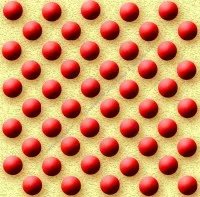Group Interactions, the Two Types and Their Ratio
- Group Interactions, Molding Relationships and Culture
- Group Interactions, the Two Types and Their Ratio
- Attacking Relational Challenges in Group Interactions
- Initiating Questions and Comments in Group Interactions
- Encouraging More Questions in Group Interactions
- Forming and Tapping Relationships in a Group Interaction
- Leveraging Group Interactions Afterwards
- Advance Work for Positioning Group Interactions
- Leveraging Group Interactions The Complete Strategy
All group interactions (GI) are a blend of two types. The difference between the two is the amount of interaction between the audience and the leader or facilitator of the GI. Thus, they influence differently. Understanding this becomes important as we leverage GI’s to mold relationships and cultures.
At one extreme, little audience participation occurs. The leader alone presents. TED talks are popular examples. At the opposing extreme, the audience participates usually in the form of question and answers (Q&A), thus directing GI flow. Press conferences are public examples (although the leader often has ways to moderate questions). Thus, by mixing the two, any GI becomes a ratio between leader’s presenting time (P) and audience’s Q&A or formulaically P/QA.
Contrasting the two, presenting delivers much information in a short time period but doesn’t permit clarification and exploration. Q&A does but since this takes time, it covers less information. So, looking at any GI as the ratio P/QA, a GI oriented around presenting could be 90/10, 90% presenting and 10% Q&A. One oriented around Q&A could easily be 30/70 meaning the leader opens with comments for 30% of the time and then attendees engage with questions and comments for the remaining 70%.
From the perspective of molding relationships and cultures, Q&A is more influential and persuasive than presenting; the spontaneity of Q&A is psychologically and emotionally more impactive. The leader is on the spot, potentially challenged. It’s the same reason management by walking around and “teachable moments” are so powerful. This doesn’t mean presenting can’t be influential, but it does mean we will need to leverage certain techniques more.
The key is remembering that all GI’s usually blend the two. That blend will depend upon the balance we want between our pragmatic goals and our relational and cultural ones.
Related post: Group Interactions, Molding Relationships and Culture




GI of P/QA is also about who is your main audience. You or the listeners.
A healthy mix of P and QA right through the GI is what constitue of interactive facilitation.
You’re right about that, Chandrashekar. Thank you for visiting and leaving your comment. I appreciate it.
Yes, Chandrashekar, it’s not only about your main audience but your sub-audiences within that main audience. It’s important not to see audiences as monolithic. They are comprised of individuals. Each one is unique. Again, I appreciate you leaving your insights here.